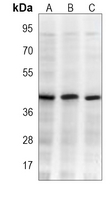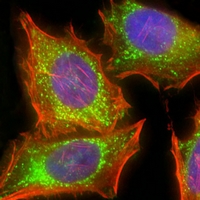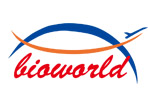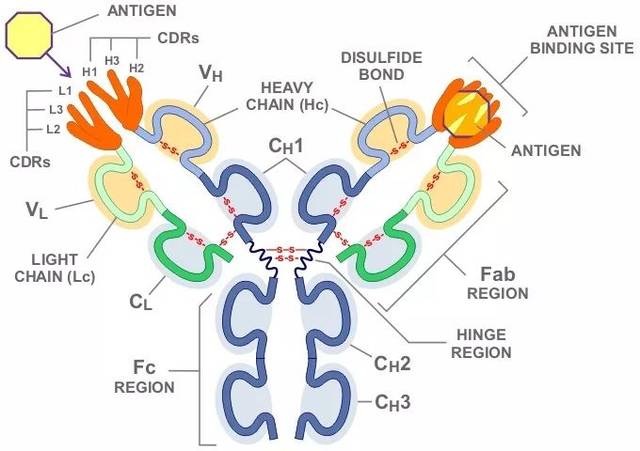Product Name :
FIH-1 monoclonal antibody Background :
FIH (Factor inhibiting HIF-1, HIF asparagine hydroxylase) is a dioxygen-dependent asparaginyl hydroxylase that modifies target protein function by hydroxylating target protein asparagine residues. Hypoxia-inducible factor (HIF), a transcriptional activator involved in control of cell cycle in response to hypoxic conditions, is an important target for FIH regulation. FIH functions as an oxygen sensor that regulates HIF function by hydroxylating at Asn803 in the carboxy-terminal transactivation domain (CAD) of HIF. During normoxia, FIH uses cellular oxygen to hydroxylate HIF-1 and prevent interaction of HIF-1 with transcriptional coactivators, including the CBP/p300-interacting transactivator. Under hypoxic conditions, FIH remains inactive and does not inhibit HIF, allowing the activator to regulate transcription of genes in response to low oxygen conditions. FIH activity is regulated in through interaction with proteins, including Siah-1, which targets FIH for proteasomal degradation. The Cut-like homeodomain protein CDP can bind the FIH promoter region to regulate FIH expression at the transcriptional level. Phosphorylation of HIF at Thr796 also can prevent FIH hydroxylation on Asn803. Potential FIH substrates also include proteins with ankyrin repeat domains, such as Iκ-B, Notch, and ASB4. Product :
Mouse IgG1 kappa. Liquid in PBS, pH 7.3, 30% glycerol, and 0.01% sodium azide. Storage&Stability :
Store at 4°C short term. Aliquot and store at -20°C long term. Avoid freeze-thaw cycles. Specificity :
Recognizes endogenous levels of FIH-1 protein. Immunogen :
KLH-conjugated synthetic peptide encompassing a sequence within the center region of human FIH-1. The exact sequence is proprietary. Conjugate :
Unconjugated Modification :
Unmodification
FIH-1 monoclonal antibody Background :
FIH (Factor inhibiting HIF-1, HIF asparagine hydroxylase) is a dioxygen-dependent asparaginyl hydroxylase that modifies target protein function by hydroxylating target protein asparagine residues. Hypoxia-inducible factor (HIF), a transcriptional activator involved in control of cell cycle in response to hypoxic conditions, is an important target for FIH regulation. FIH functions as an oxygen sensor that regulates HIF function by hydroxylating at Asn803 in the carboxy-terminal transactivation domain (CAD) of HIF. During normoxia, FIH uses cellular oxygen to hydroxylate HIF-1 and prevent interaction of HIF-1 with transcriptional coactivators, including the CBP/p300-interacting transactivator. Under hypoxic conditions, FIH remains inactive and does not inhibit HIF, allowing the activator to regulate transcription of genes in response to low oxygen conditions. FIH activity is regulated in through interaction with proteins, including Siah-1, which targets FIH for proteasomal degradation. The Cut-like homeodomain protein CDP can bind the FIH promoter region to regulate FIH expression at the transcriptional level. Phosphorylation of HIF at Thr796 also can prevent FIH hydroxylation on Asn803. Potential FIH substrates also include proteins with ankyrin repeat domains, such as Iκ-B, Notch, and ASB4. Product :
Mouse IgG1 kappa. Liquid in PBS, pH 7.3, 30% glycerol, and 0.01% sodium azide. Storage&Stability :
Store at 4°C short term. Aliquot and store at -20°C long term. Avoid freeze-thaw cycles. Specificity :
Recognizes endogenous levels of FIH-1 protein. Immunogen :
KLH-conjugated synthetic peptide encompassing a sequence within the center region of human FIH-1. The exact sequence is proprietary. Conjugate :
Unconjugated Modification :
Unmodification
-
 Western blot analysis of FIH-1 expression in 293 (A), Jurkat (B), ZR751 (C) whole cell lysates.
Western blot analysis of FIH-1 expression in 293 (A), Jurkat (B), ZR751 (C) whole cell lysates. -

Bioworld Biotech only provide peptides for our antibodies and do not provide additional peptide customization services.
Price/Size :
USD 368/1mg/vial
Tips:
For phospho antibody, we provide phospho peptide(0.5mg) and non-phospho peptide(0.5mg).Describe :
Blocking peptides are peptides that bind specifically to the target antibody and block antibody binding. These peptide usually contains the epitope recognized by the antibody. Antibodies bound to the blocking peptide no longer bind to the epitope on the target protein. This mechanism is useful when non-specific binding is an issue, for example, in Western blotting (WB) and Immunohistochemistry (IHC). By comparing the staining from the blocked antibody versus the antibody alone, one can see which staining is specific; Specific binding will be absent from the western blot or IHC performed with the neutralized antibody.Formula:
Synthetic peptide was lyophilized with 100% acetonitrile and is supplied as a powder. Reconstitute with 0.1 ml DI water for a final concentration of 10 mg/ml.The purity is >90%,tested by HPLC and MS.
Storage:
The freeze-dried powder is more stable. For short time at 2-8°C. For long term storage store at -20°C.
Note :
This product is for research use only (RUO only). Not for use in diagnostic or therapeutic procedures.
 FIH-1 monoclonal antibody
FIH-1 monoclonal antibody  Datasheet
Datasheet COA
COA MSDS
MSDS SHIP
SHIP